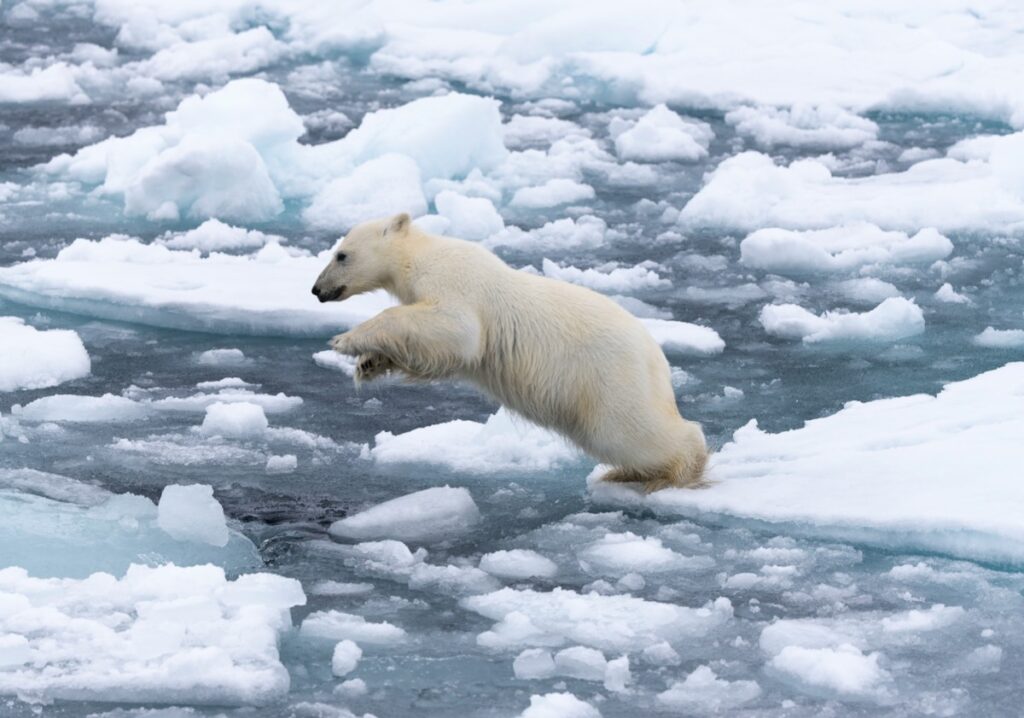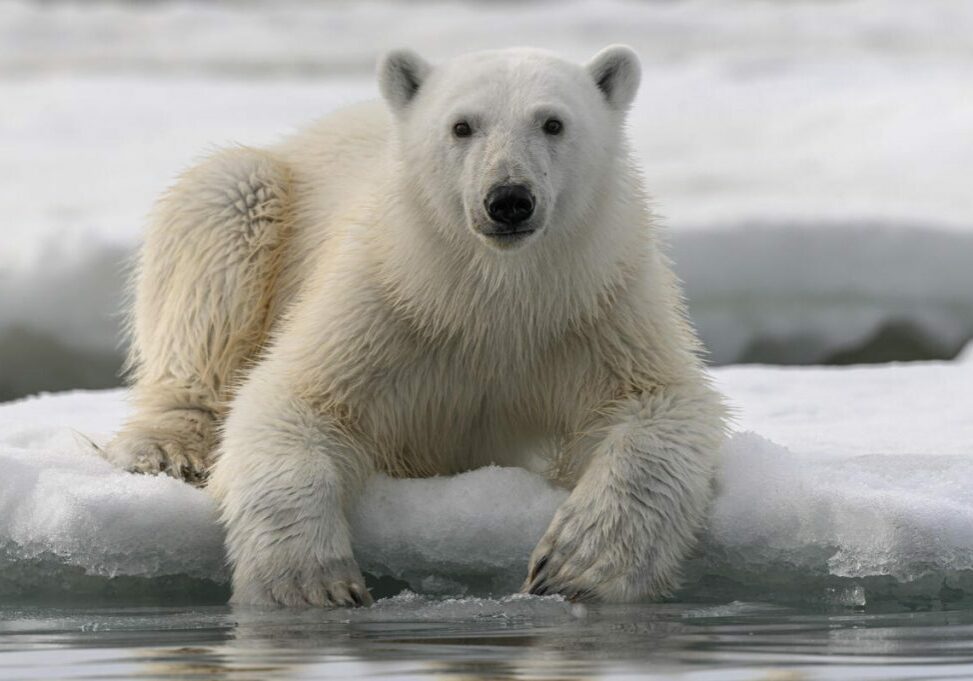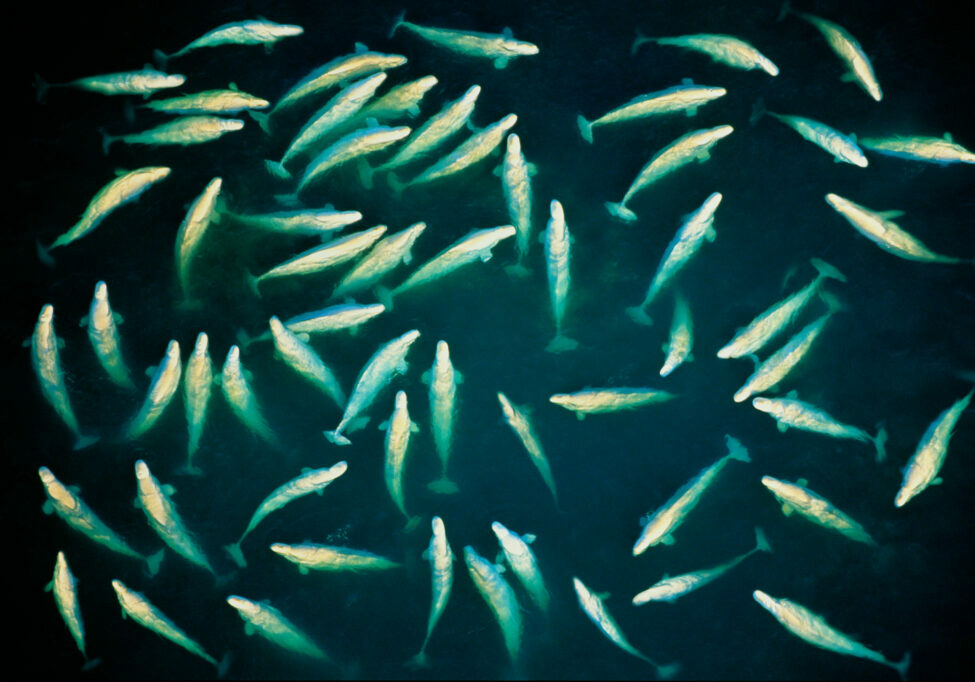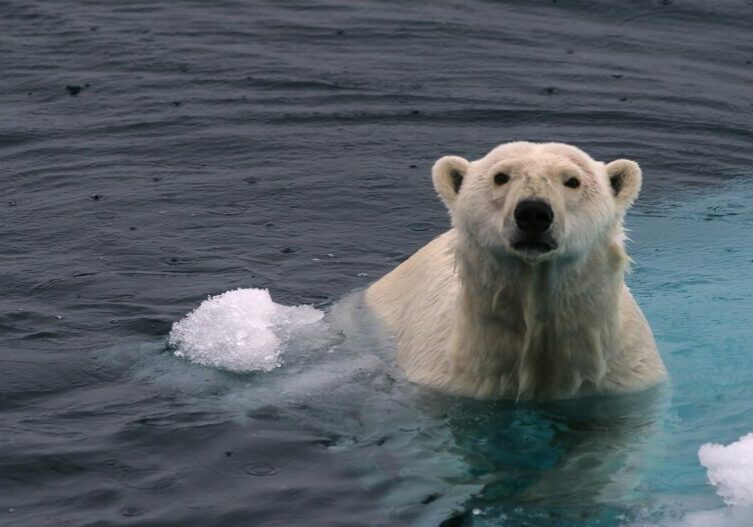We’ve known for many years that global warming poses a threat to polar bears. Over hundreds of thousands of years, polar bears have evolved to depend on sea ice to hunt and to travel across large distances.
But as the Arctic heats up, the bears’ sea ice habitat is shrinking. In areas where the ice disappears for most of the year, polar bear populations are unlikely to survive unless we take urgent action on climate change.
With funding from WWF supporters, including our amazing polar bear adopters, scientists have discovered a new threat: the loss of sea ice is also undermining the bears’ genetic diversity. This is significant because genetic diversity is a crucial ingredient for adapting to environmental changes.
With regular migration and breeding between different groups, the bears mix and match the genetic traits that can help them adjust to the rapid changes they’re facing and boost their chances of survival. By contrast, inbreeding makes populations weaker and less resilient.
Scientists from the Norwegian Polar Institute analysed genetic data from 626 bears recorded between 1995 and 2016 in four areas in Svalbard, Norway. These polar bears are experiencing the most severe loss of sea ice in the Arctic: in the past 30 years, the ice-free season here has lengthened by 20 weeks.
Where before the polar bears could travel easily across the ice, now their movements are more restricted. Though polar bears are strong swimmers, it’s much harder for them to cross large areas of open water, leaving groups of bears increasingly isolated.

© RICHARD BARRETT
The analysis revealed a 3-10% loss of genetic diversity over two decades. There’s also been a 200% increase in genetic differences between distinct sub-populations. Both these findings suggest increased inbreeding within local groups.
It’s a similar picture to what we see in other groups of animals whose habitats have become restricted and fragmented. But while it’s possible to restore the connections between, for example, areas of tropical forest – as our work with orangutans shows – polar bear populations are likely to become increasingly cut off from each other, with the Arctic warming nearly three times faster than the rest of the planet.
This latest study adds to the growing alarm over the long-term survival of polar bears in the face of irreversible changes in the Arctic climate. Working with scientists and traditional communities, we’re doing everything we can to bolster the resilience of polar bears and other species affected by a warming Arctic, such as walruses, reindeer, narwhals and belugas.
But the most important action to save polar bears won’t happen in the Arctic itself. The world needs to urgently cut greenhouse gas emissions and step up to its commitment under the Paris Agreement to limit global temperature rise to 1.5°C. Only then will we have a hope of preventing the disappearance of Arctic sea ice and the polar bears and other creatures that depend upon it.
Adopt a polar bear
You can do even more to support our work in the Arctic by adopting a polar bear.
More to explore

Living with polar bears
As climate change causes summer sea ice to dwindle in the Arctic, hungry polar bears are increasingly coming into conflict with local people. But we’re helping them to live side by side more safely

